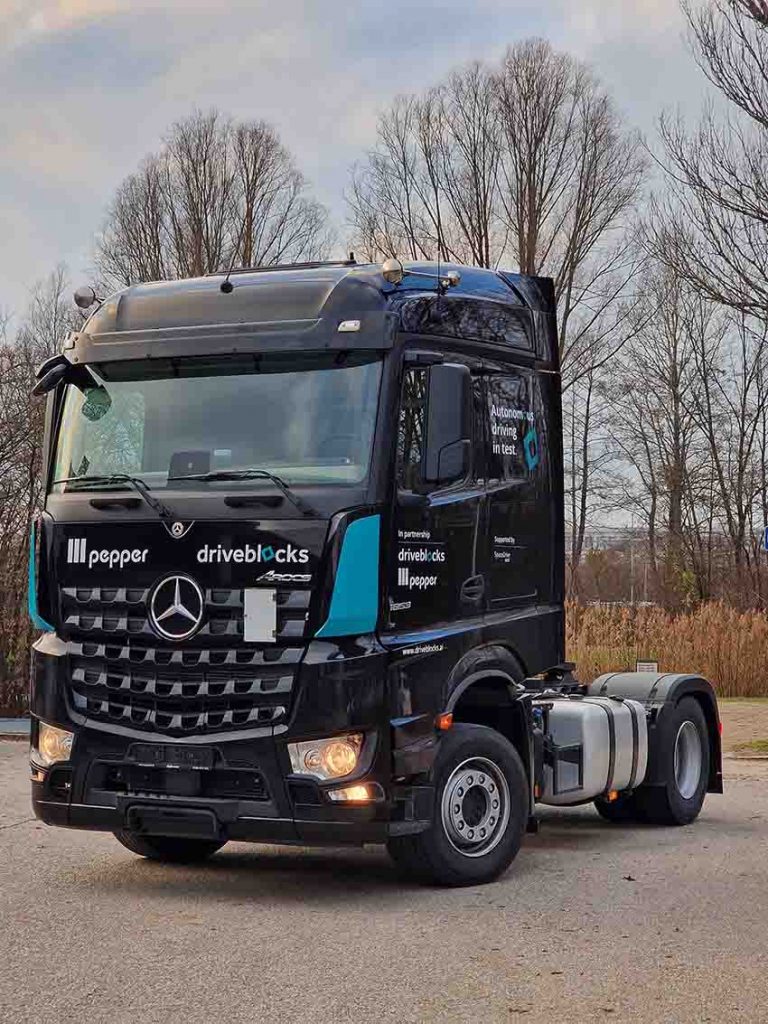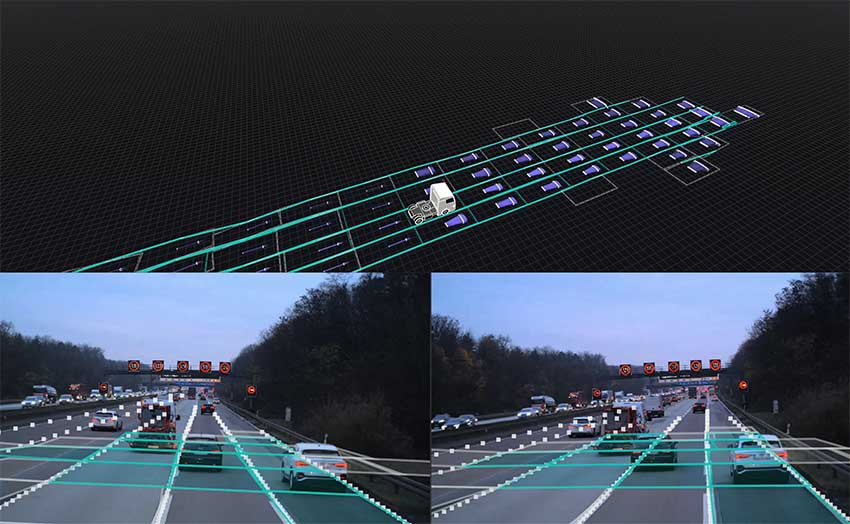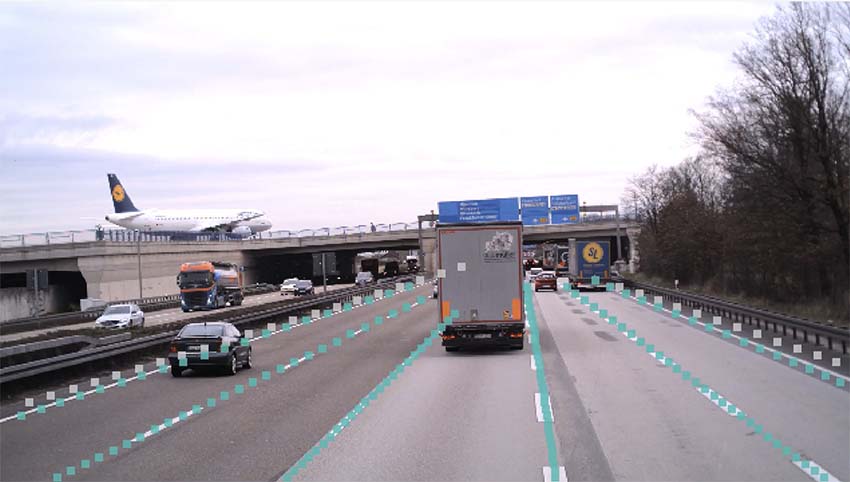driveblocks develops Level 4 autonomous driving software for commercial vehicles with potential applications within various sectors, ranging from agriculture, container terminals, and mining up to highway hub-to-hub trucking.
The core product is the “Mapless Autonomy Platform” – currently consisting of perception and sensor-fusion algorithms to overcome the dependence of autonomous vehicles on high-definition maps. The software provides information about the drivable space, the potential driving corridors via lane or similar geometric guidance as well as objects around the vehicle. It can be utilized as a redundant path to an HD-map based approach or fully replace the HD-map depending on the application requirements. This helps to overcome edge-cases, when the map is not accurate anymore and unlocks additional cost savings as the cloud connection and backend can be much smaller.
The company approaches this problem with a multi-modal and modular sensor-fusion approach which works on several different sensor setups with only minimal adjustments and re-training of the neural networks. The data efficiency is key for the successful deployment in various applications.
Interview with Alexander Wischnewski, Managing Director / CTO at driveblocks.
Easy Engineering: What are the main areas of activity of the company?
Alexander Wischnewski: Our current main activities include the development of perception and sensor-fusion algorithms.

The team leverages recent breakthroughs in AI such as transformer neural networks to achieve the best perception quality while maintaining a resource efficient and real-time capable approach. In addition, the deep-learning based algorithms are accompanied by a set of well interpretable classical algorithms and eventually fused in a geometrically interpretable sensor-fusion. In addition, driveblocks is actively working on ensuring its AI applications match the required quality, ethical and safety standards for application in such critical use-cases.
E.E: What’s the news about new products?
A.W: The Mapless Autonomy Platform was recently released in the 2023.02 version with several feature additions around camera and LIDAR perception functionalities as well as enhancements to the sensor-fusion algorithms. The software is currently in extensive evaluation in test vehicles on public roads within multiple customer projects.
E.E: What are the ranges of products?
A.W: The core product at this point is the Mapless Autonomy Platform with algorithms for Camera and LIDAR perception as well as sensor-fusion algorithms. These are complemented by a vast set of analysis and development tools, such as an effective data management platform to ensure high quality AI models and cost-efficient improvements when additional sensor data is collected.
The product is distributed to customers on a license-based model and can be fully integrated with the existing development workflow. It enables the development team to achieve more in less time with full parameter access, debugging capabilities, an open-interface specification and extensive documentation.

E.E: At what stage is the market where you are currently active?
A.W: The autonomous driving market for commercial vehicle is currently moving from technology demonstrations to product development to achieve viable business cases. The market pressure is high, as the driver shortage is a threat in many regions and urges fleet operators and vehicle OEMs to provide increasing automation capabilities within their products.
The trend towards the software-defined vehicle allows system integrators and OEMs to integrate software and technology from various vendors into products and therefore find the optimal trade-off between performance and cost for their respective application.
E.E: What can you tell us about market trends?
A.W: We see an increasing trend towards applications where there is a clear business case in the near future among several verticals. Our focus on commercial vehicles fits this trend as there are various applications with lower complexity in conjunction with a clear market demand. This is going to allow us to scale gradually from off-road applications to on-road deployment of our technology.

E.E: What are the most innovative products marketed?
A.W: The AI algorithms within the driveblocks Mapless Autonomy Platform leverage Transformer Neural Networks which have been part of the breakthroughs achieved by large language models such as Chat-GPT. The applied attention mechanisms allow the models to take into account global context in the data instead of being focused on local features, as it was common with convolutional neural networks or recurrent neural networks.
We focus on bridging the gap between advanced AI applications and embedded and safety-critical system by bringing our expertise in both domains to the table.
E.E: What estimations do you have for 2023?
A.W: We are going to see increasing capabilities of AI models as well as autonomous vehicles. The key focus remains to achieve the required quality, ethical standards, and safety-certification within this complex technological challenge. It’s an exciting time to be in the industry and see so many players and experts collaborating in an open ecosystem to make autonomous driving at scale a reality.

